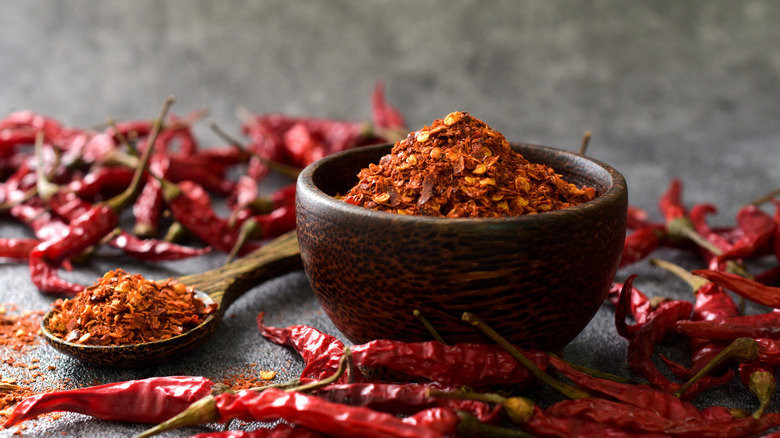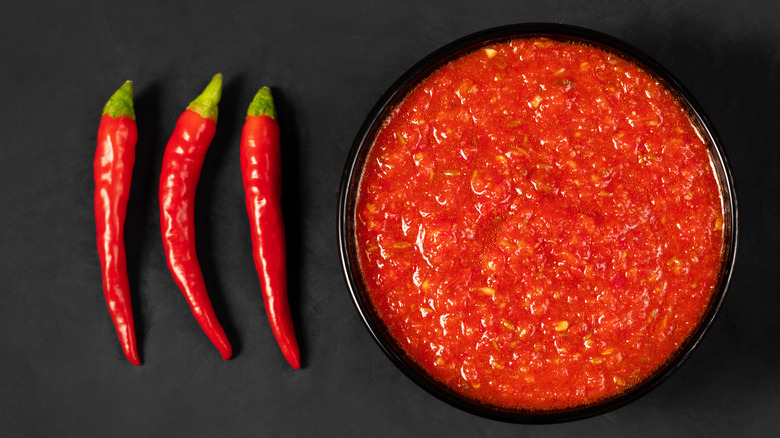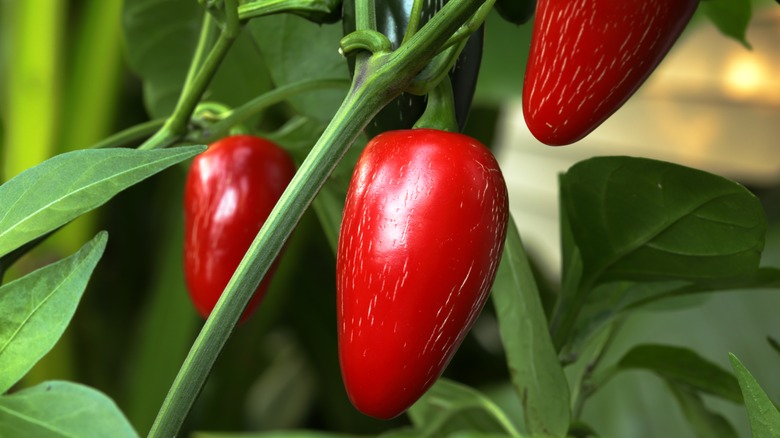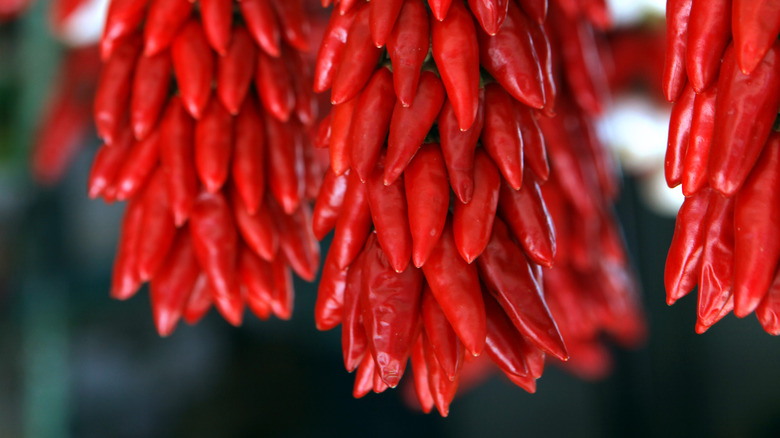Most Of The World's Chili Peppers Come From This Country
Not everyone can handle the heat. Spice is a way of life for some, and pure torture for others. But regardless of whether you love it or not, spice plays a critical part in our culinary experience and has for centuries.
While some spices come from seeds (like Cayenne pepper), unripe fruit (like black pepper), or ground rhizomes (like wasabi) a world-class spice, widely enjoyed throughout East Asia and Central America is the chili pepper. Diversivore says that the chili pepper is known for its acidity and sharp heat and though they are native to Central America, the chili is most commonly sold as "Chiles Japones" or "Chinese chilies" and can be bought whole, ground, or crushed. But why do they have these names? Because China is the largest producer of chili peppers in the world.
Chili peppers in China
So, if the chili pepper originated in the Americas, how did it end up thriving on the other side of the globe? Though China didn't always grow chili, once the plant was brought to their shores there was no turning back. According to Cookin Shanghai, chilies are now widely used fresh, dried, and pickled throughout today's Chinese cuisine and it is believed that their spice is good for the body. Common recipes using the chili pepper include the Chongqing hot pot, laziji, and of course chili sauce. Because of the country's love of the stuff, China now farms a majority of the world's production.
The Science Agriculture claims that China has 1.3 million hectares dedicated to the chili's growth mainly throughout the provinces of Gansu, Hebei, Shanxi, Xinjiang, and Shandong. China produced 18,535,308 tons of chilies in 2018 alone making up 45.2% of the world's total production (via Guinness World Records). As for China's exploitation of the crop, Xin Huanet says that in 2021 the country shipped 119,900 tons of dried chili peppers in only the first six months of the year.
The history of chili peppers
Chili peppers existed long before they were brought to China. According to World Atlas, people have been chomping down on chilis since 7,500 BC! They originated in Central America, but because of the Columbian Exchange and the trade routes put in place by the Portuguese and Arab nations, the chili eventually made its way to Southeast Asia. From the south, they were then sailed to China where they were revered for their flavor, attractive color, and health benefits, as reported by Sixth Tone.
Though the chili pepper shares the title and some of the spicy characteristics of the peppercorn, it is not related. The black pepper we grind at our dinner table originated in India and is part of the Piperaceae family whereas the chili pepper is a part of the nightshade (Solanaceae) family, says Britannica. But don't worry, not all of the nightshade family are known to kill, and we eat many of their fruits such as tomatoes and potatoes!
The benefits of chili peppers
Around the globe people are focused on the health benefits food can bring them whether it be to aid digestion, prevent heart disease, or simply give us some well-needed vitamins, we turn to foods to make us healthy and chili peppers are no exception. Healthline explains that Chili peppers (Capsicum annuum) are a spicy fruit that carries a wealth of vitamins and minerals. They are high in vitamin C, a multitude of vitamin Bs, vitamin K1, Copper, vitamin A, and potassium. Sounds fantastic right? Unfortunately, most of us don't eat enough peppers to actually make a big enough difference, but when they are incorporated into your diet chilis are known to aid in bone, kidney, and heart health.
Throughout history, chili peppers were also added to food to help keep it from spoiling before the invention of the refrigerator. According to Pepper Head, that lovely spice helps to control bacterial growth, protecting us from some food poisoning! So why wouldn't you want to eat chili peppers with everything? So, load on that hot sauce and kick up the heat, because not only are chilies great tasting, they are great for you too.



